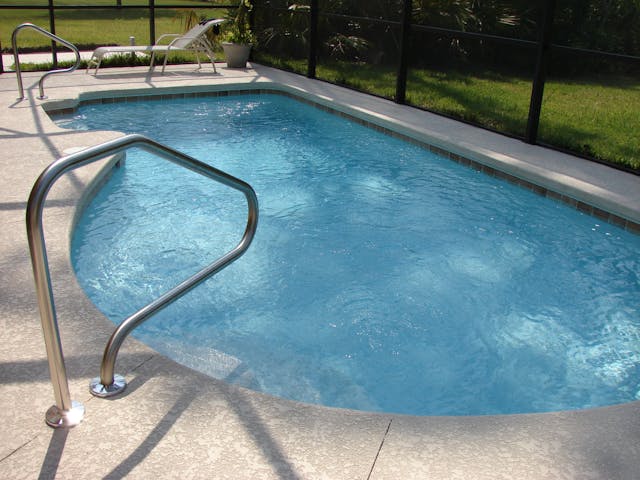
The main purpose of a pool pump is to provide water through the filtering system. This helps mix chemicals and sanitise the water, which keeps it clean. However, in order for this process to work the pool pump must be of the right size. You must consider flow rate, pool size, capacity and other important calculations. We have explained in detail all the factors you need to consider for buying the right size pool pump.
The Capacity of Your Pool
Many pool owners assume that a bigger pump size is better as it can handle more water. However, an incorrect pump size can cause many problems. Your pool’s total capacity to handle water is called volume, and it is measured in gallons. This capacity can be determined by understanding the depth of your pool. You need average depth to calculate the pool’s volume, depending on its shape.
Suppose the average depth of your pool is 8 feet.
- Circular Pools: Diameter (ft.) x Diameter (ft.) x Average Depth (ft.) x 5.9 = Total pool capacity in gallons.
- Oval Pools: Length (ft.) x Width (ft.) x Average Depth (ft.) x 6.7 = Total pool capacity in gallons.
Maximum Flow Rate
Flow rate refers to the gallons of water that a pump can handle at a time. If you get a smaller pump, it won’t be able to handle the huge gallons of water. This can eventually lead to a muddy pool as water cannot circulate in the pool filters. Each pool filter has a maximum flow rate, which is its limit. This limit should always match the maximum flow rate of your pool pump.
Calculate the Turnover
Turnover is the maximum time your filters need to circulate all the pool water. If your filters and pumps are jammed or have trapped dirt, the turnover can be reduced. To avoid this, you should invest in pool pump covers South Africa, as this can protect your pump against any damage. To calculate turnover, you can use this formula:
Pool Volume in Gallons ÷ Turnover Rate in Minutes = Flow Rate
Understand the Type of Pump
For pool water circulation there are multiple pumps available in the market. You can opt for an energy-efficient variant and other features like built-in timer. These pumps are known to be energy-extensive so it is always suggested to check for energy star ratings. Additionally, you can get a variable-speed pool pump as these can work on different speed settings.
Total Resistance
As the water moves through the filtering system of your pool it can face some resistance. This can be caused due to pipes or the shape of the pool. The friction that the water faces in order to reach the pool is known as total dynamic head. To calculate this you can add the pressure of water flowing into the filter tank. Multiply it by 2.31 to the vacuum reading on the pump suction line multiplied by 1.13.
So, now you know everything you must consider while analysing the right size pool pump. You can find a perfect pool pump by following these calculations and understanding your daily requirements. Match these requirements and always check the manufacturer’s rating and pump capacity. This can ensure a longer lifespan for your pump while optimising its pumping capabilities.
Photo credit: https://www.pexels.com/photo/swimming-pool-261238/



